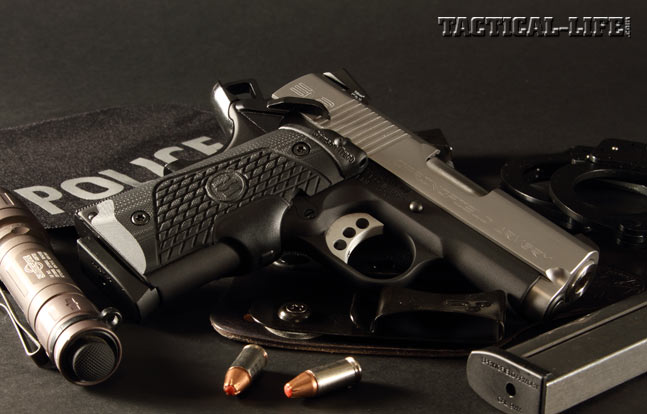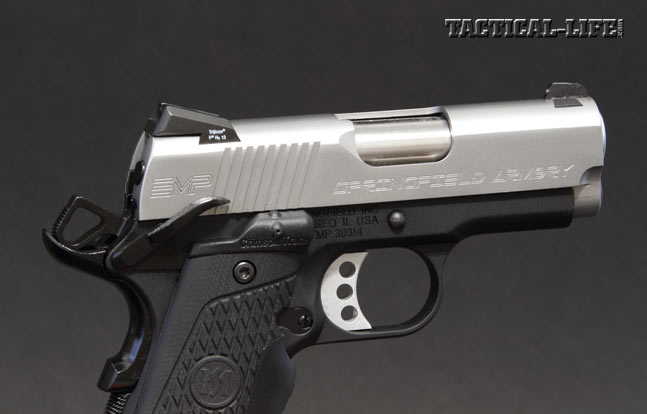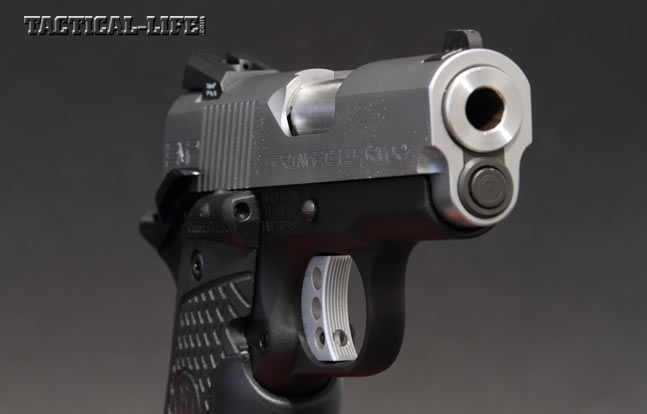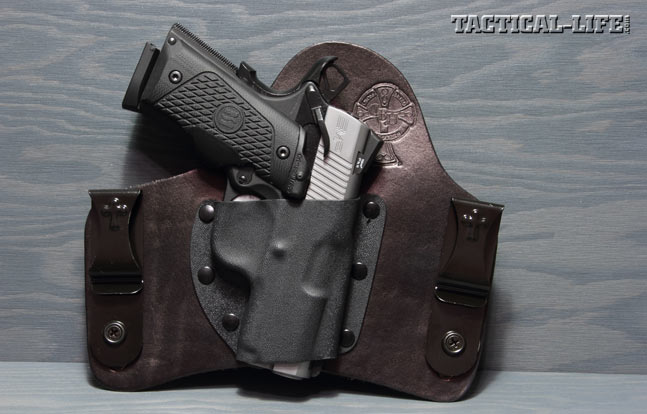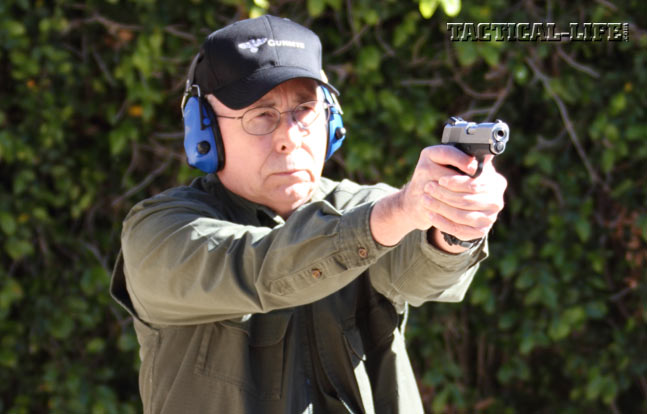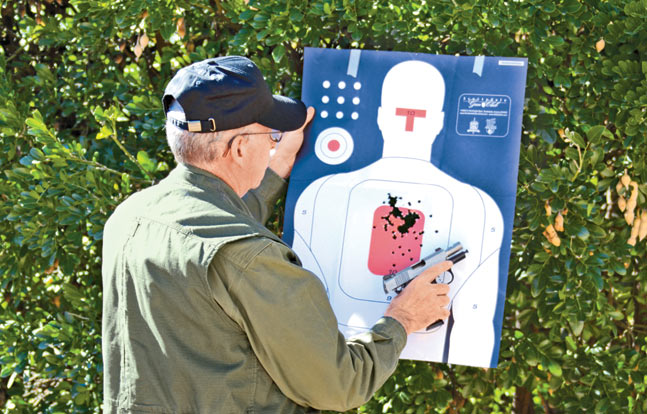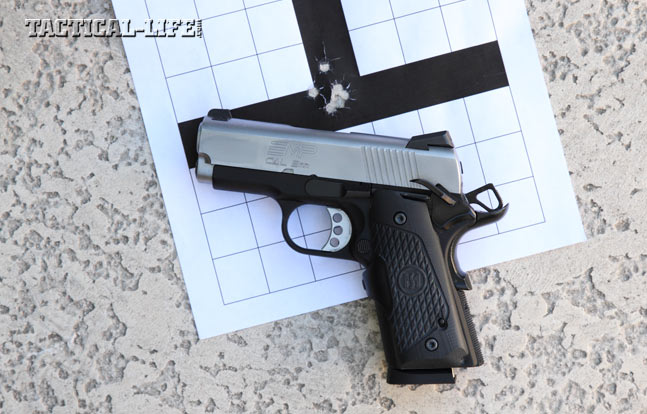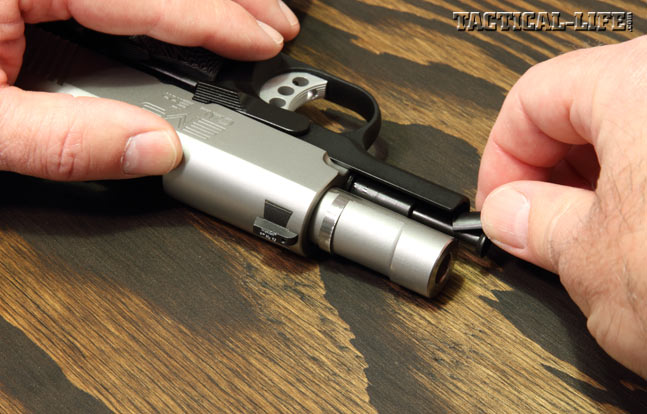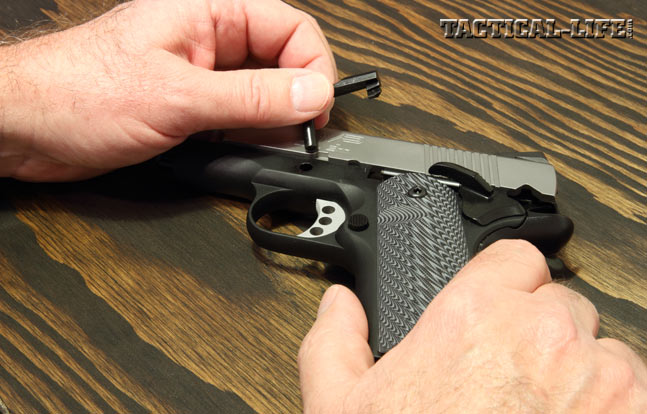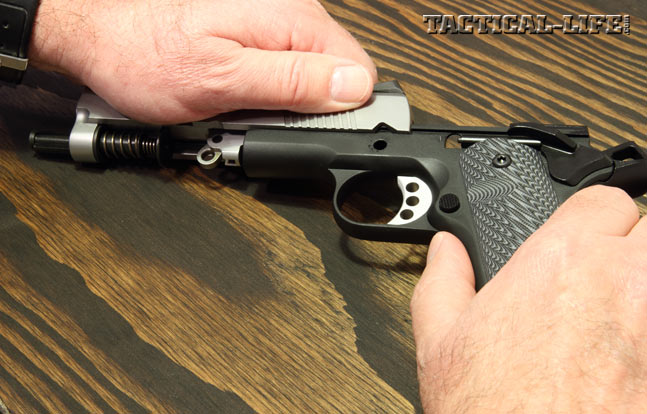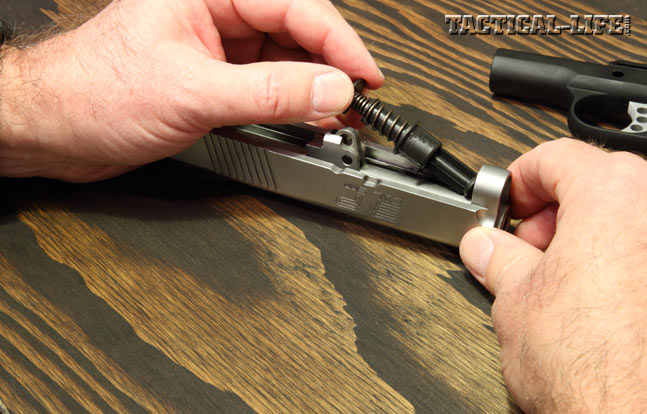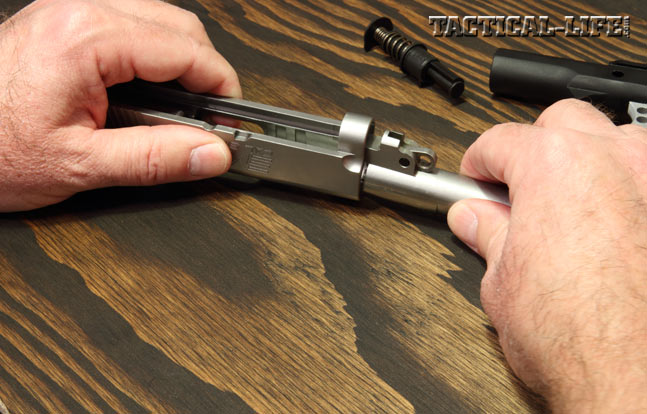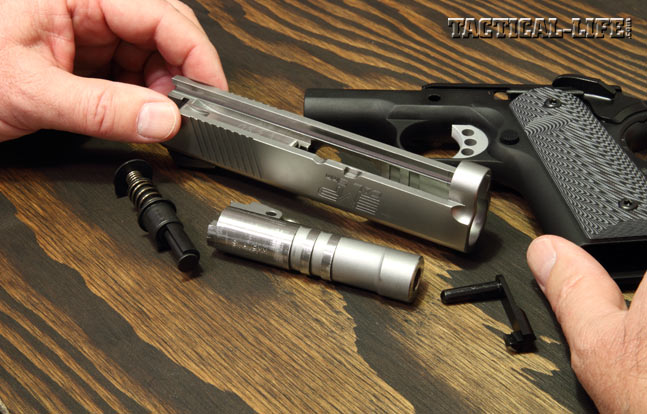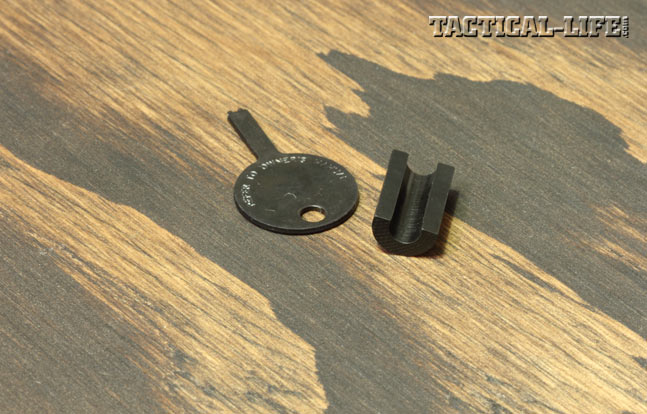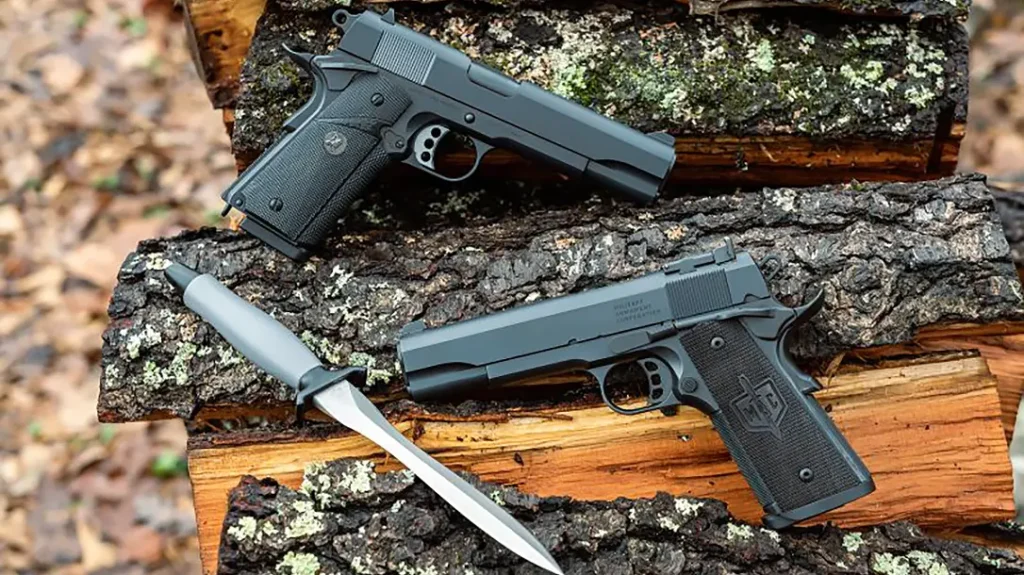Many consider the 1911 the best pistol ever designed for self-defense, but it is most often chambered for the .45 ACP. It was adopted by the U.S. military in 1911 as a .45, but manufacturers soon chambered the gun for other calibers. Chambering the 1911 for the shorter 9mm round requires modification to the magazine and feed ramps and still leaves one with a full-size 1911. So instead of modifying a larger gun for a smaller cartridge, Springfield Armory decided to shrink the 1911 design and make it fit the 9mm round. That is no minor undertaking. What came out of this was the Enhanced Micro Pistol (EMP).
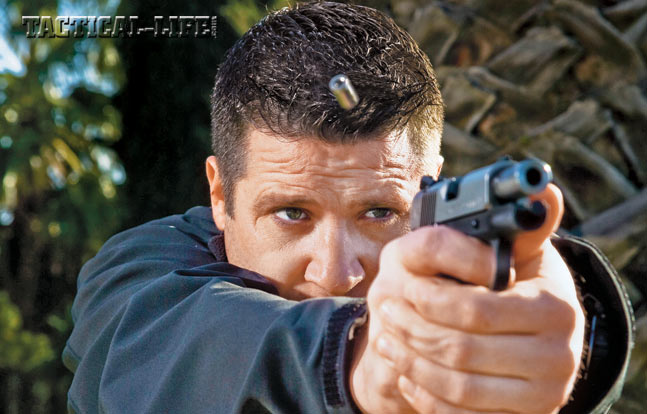
Downsizing
Holding nine rounds in its single-stack magazine and one in the chamber, the EMP has a higher capacity than the single-stack .45 ACP 1911. The EMP is just as slim, too, but it’s lighter and just smaller enough than its big brother to make it more comfortable to carry and easier to do so discreetly. And it is still chambered in a serious self-defense round that is finding more acceptance among people who carry a gun for a living.
Advertisement — Continue Reading Below
“For those law enforcement personnel who need to carry a gun discreetly, the smaller EMP offers a number of advantages…”
Built on an aluminum frame, the EMP retains the features of the 1911 that make it so popular. It still has the single-action trigger that encourages accurate shooting compared to double-action or striker-fired guns. It also retains the thumb and grip safeties, which help to reduce accidental discharges during holstering. To take advantage of these features, the shooter engages the thumb safety and then moves his or her firing-hand thumb from its normal grip around the stocks and places it on the back of the slide. This allows the grip safety to engage. Then if the trigger catches on clothing or some other object during the holstering process, it will not move to the rear and cause the hammer to drop. Get professional training before trying this technique, though.
For those law enforcement personnel who need to carry a gun discreetly, the smaller EMP offers a number of advantages. When carried inside the waistband in a holster like the Crossbreed SuperTuck Deluxe, the gun nearly disappears, yet it can be quickly presented in the case of a deadly threat. And with a set of Crimson Trace Lasergrips, even in low-light situations, the gun can be aimed when it is not possible to see the sights because it may be too dark or because the shooter is in an awkward position. This could happen if the shooter is knocked to the ground in a fight.
Another advantage is less recoil than a .45. It is often said that in the middle of a life-threatening event, the shooter won’t notice recoil. However, it is still there and can make getting the sights back on target for a follow-up shot slower. You are fooling yourself if you think that you won’t need a follow-up shot with a .45. There are plenty of cases where a person has taken a round in a critical area and kept going long enough to kill or injure another person. So even with a .45, one shot may not be enough to stop a fight.
Advertisement — Continue Reading Below
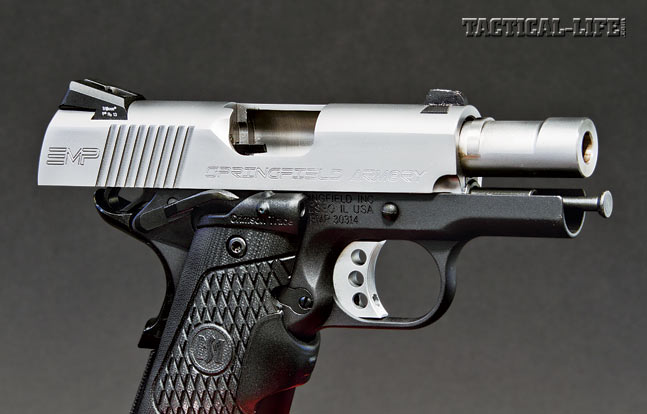
FBI’s Take On The 9
But what about the fight-stopping ability of those 9mm rounds? The FBI created a test procedure to measure the effectiveness of a cartridge and uses that comparative information in selecting the best ammunition for its agents to carry. Under controlled conditions, the distance of penetration and the amount of gelatin that is disrupted or damaged is recorded. Not only are rounds fired into bare gelatin, but they are fired first through various barriers like sheet metal, wallboard and clothing, all of which affect the damage a round inflicts. Ammunition manufacturers want to sell ammunition and the FBI buys a lot, so makers do a great deal of research and testing to develop ammunition that meets or exceeds the minimum test standards.
“The bullet core is made of high-antimony lead for strength, and the thickness of the copper jacket is tapered to further control expansion…”
Hornady, for example, has developed a line of self-defense handgun ammunition it calls Critical Duty. This is not the round-nose FMJ bullet that was the subject of much well-deserved criticism throughout most of the 20th century. A flexible polymer insert within the hollow-point cavity of the projectile reduces the chances of it being filled with material like clothing fibers or wallboard. That material can prevent a bullet from expanding the way it needs to in order to damage tissue and stop an attacker.
Advertisement — Continue Reading Below
But it’s not just the insert in the FlexLock bullet that maximizes its fight-stopping potential. The bullet core is made of high-antimony lead for strength, and the thickness of the copper jacket is tapered to further control expansion. The result is a bullet that will expand to about half an inch and penetrate beyond the FBI’s minimum of 12 inches under most circumstances. This makes a 9mm bullet that rivals the terminal ballistics of other larger bullets.
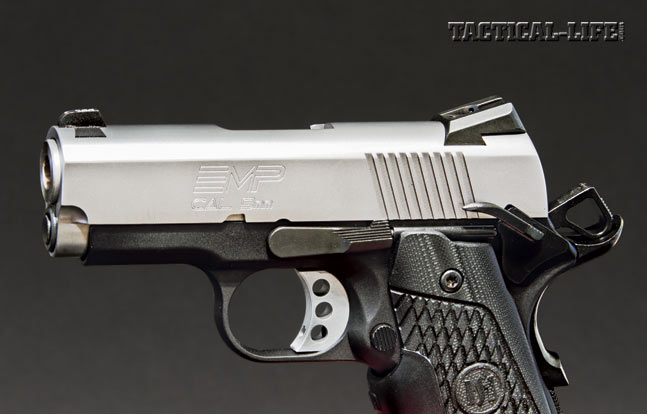
Fast Handling
Using a variety of jacketed-hollow-point (JHP) ammunition, the Springfield EMP I received for testing never experienced a single malfunction, whether fired in tactical drills or from the bench for accuracy. And at the 7-yard test distance prescribed for a short-barreled gun, its accuracy was very good, with some groups under 1 inch. The gun was quick to aim and get back on target, whether using the standard tritium night sights or Crimson Trace Lasergrips.
Advertisement — Continue Reading Below
With the proper ammunition and a shooter who can put the bullet in the right place, the Springfield EMP in 9mm is not the pipsqueak some might believe.
For more information, visit springfield-armory.com or call 800-680-6866.
